CMS138v11 – Preventive Care and Screening: Tobacco Use: Screening and Cessation Intervention
| Preventive Care and Screening: Tobacco Use: Screening and Cessation Intervention | CMS138v11 | Percentage of patients aged 18 years and older who were screened for tobacco use one or more times during the measurement period AND who received tobacco cessation intervention during the measurement period or in the six months prior to the measurement period if identified as a tobacco user.
Three rates are reported:
|
|---|---|---|
| – INITIAL POPULATION
All patients aged 18 years and older seen for at least two visits or at least one preventive visit during the measurement period. A qualifying visit in this case can be either of the following:
Furthermore, a ‘preventive’ qualifying visit includes:
|
||
| – DENOMINATOR – 1
Equals Initial Population |
– NUMERATOR – 1
Patients who were screened for tobacco use at least once during the measurement period. |
|
| – DENOMINATOR – 2
Equals Initial Population + patients who were screened for tobacco use during the measurement period and identified as a tobacco user. |
– NUMERATOR – 2
Patients who received tobacco cessation intervention during the measurement period or in the six months prior to the measurement period. The tobacco cessation intervention in this case can include either of the following:
|
|
| – DENOMINATOR – 3
Equals Initial Population |
– NUMERATOR – 3
Patients who were screened for tobacco use at least once during the measurement period AND who received tobacco cessation intervention during the measurement period or in the six months prior to the measurement period if identified as a tobacco user. |
|
| – DENOMINATOR EXCLUSIONS
Patients who are in hospice care for any part of the measurement period. |
||
| – APPLICATION WORKFLOW
For Denominators 1 & 3: To record the encounters, navigate to Patient > Provider Notes > Create Superbill. Under the ‘Procedure- CPTs’ heading, enter the encounter code. 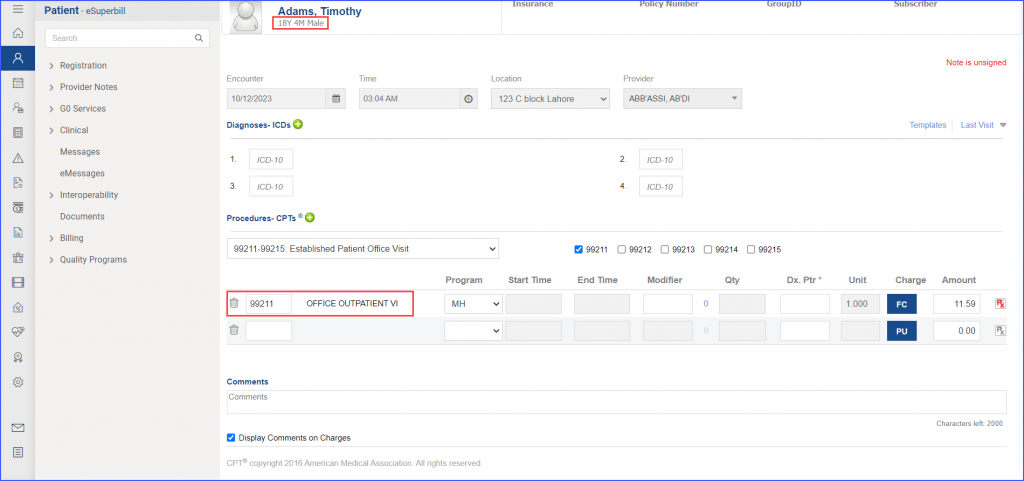 For Denominator 2:

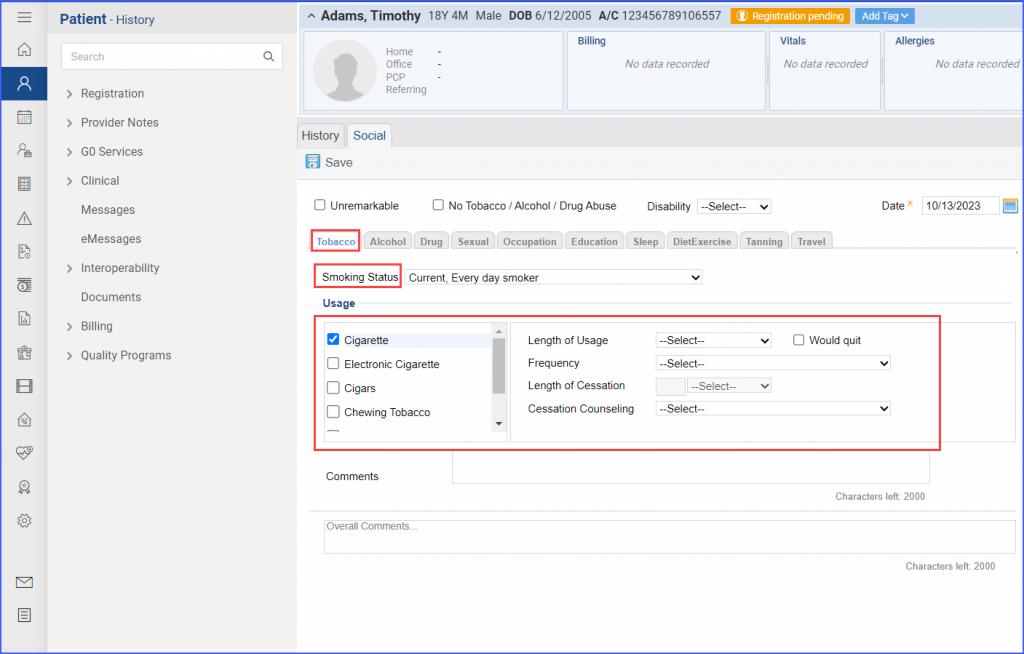 For Numerator 1: Identifying patients as ‘Smoker’ or ‘Non-smoker’ can be done via Patient > Clinical > History > + Social. Here, select the ‘Tobacco’ tab and use the drop down for ‘Smoking Status’ to choose the relevant smoking status of the patient. Once done, click ‘Save’. 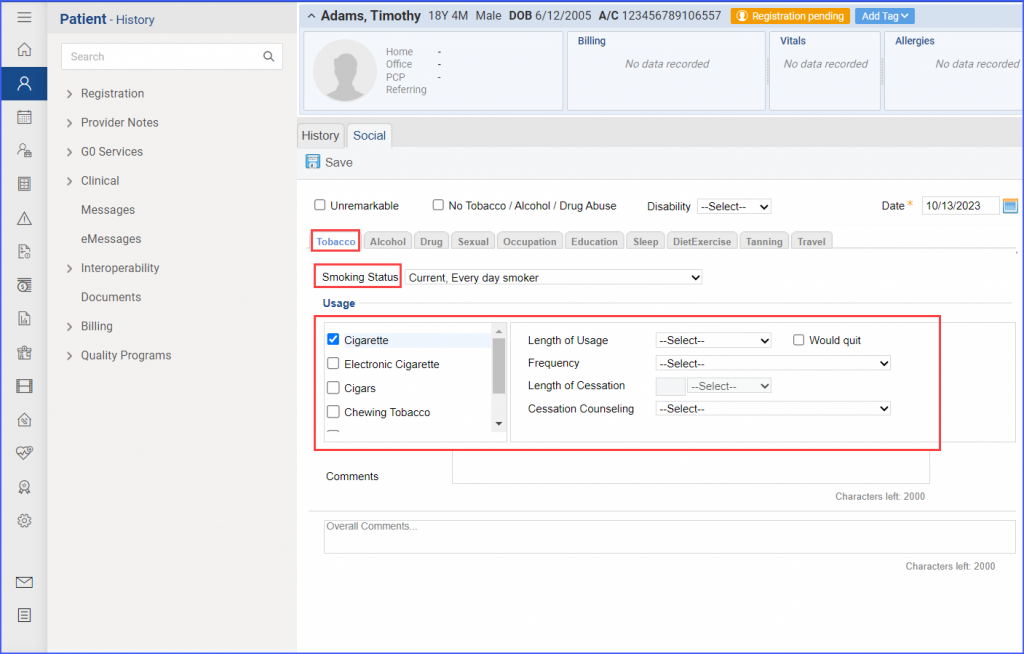 For Numerator 2:
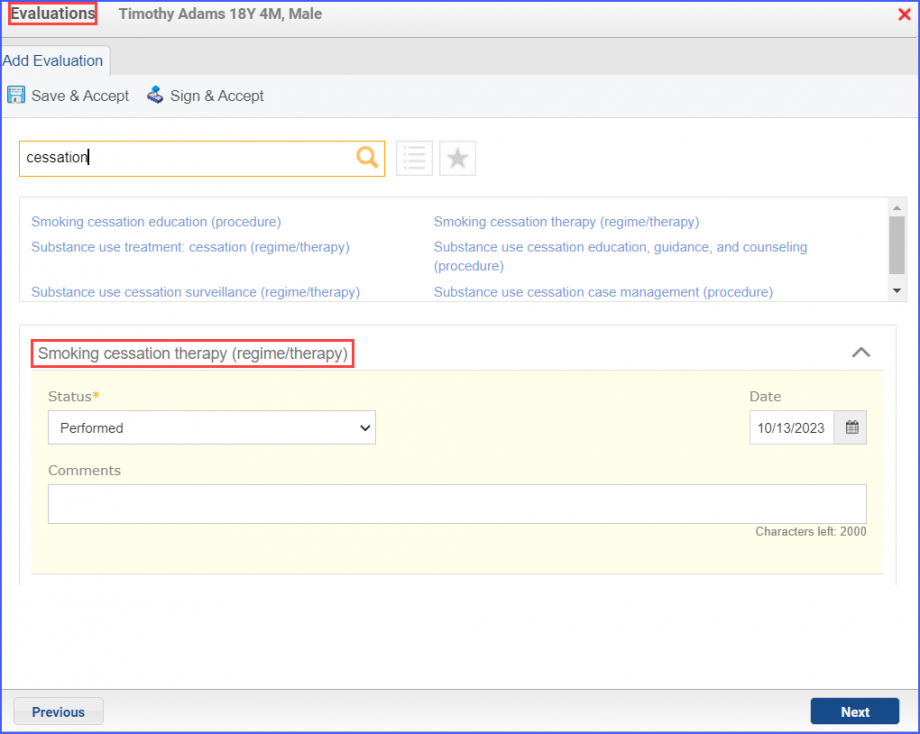
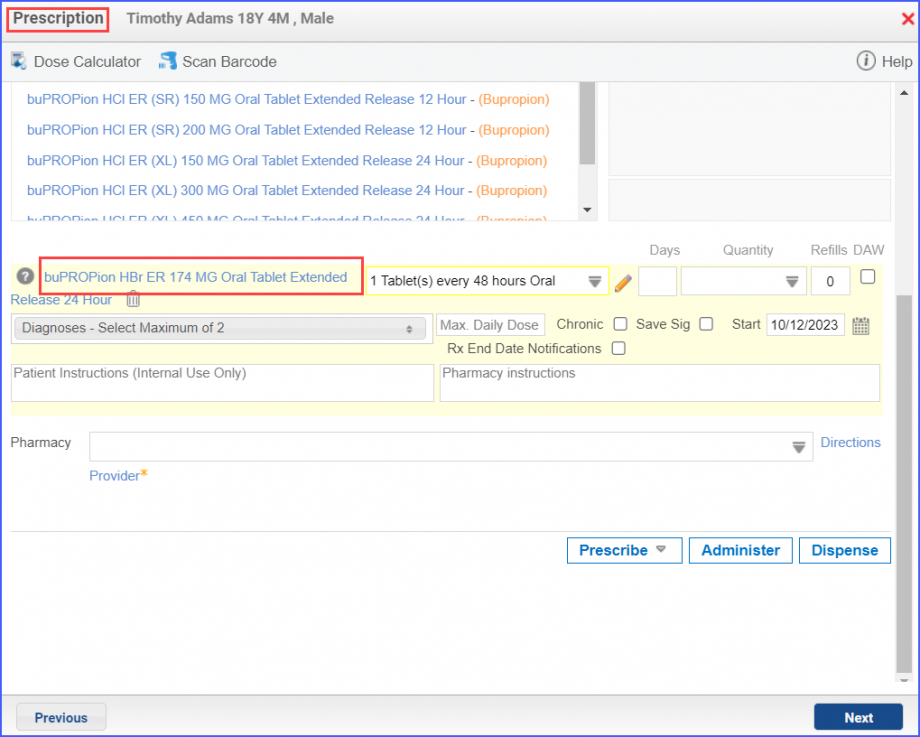 For Numerator 3:
For Denominator Exclusions: To document a patient receiving hospice care, navigate to Patient > Provider Notes > Evaluations. Hospice Care can also be recorded by the workflow Patient > Provider Notes > Create Superbill. Under the ‘Procedure-CPTs’ heading, add the relevant hospice care code.
|
||

